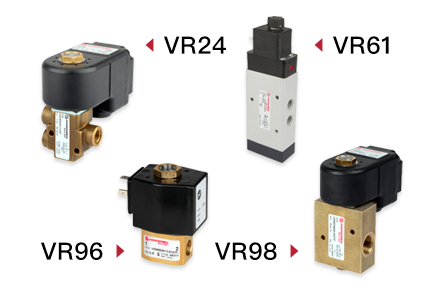What is the role of the F011068 Norgren valve group pilot valve in the hydraulic system?
F011068 Norgren valve group pilot valveWhat is the role of the pilot valve in a hydraulic system? For some non-professionals, when it comes to pilot valves, many people may not know what it is. In fact, it is a tool that can play a controlling role and has different functions in a hydraulic system.

First, understand the role of the pilot valve in hydraulics.
F011068 Norgren valve group pilot valve: The hydraulic system also needs to be powered. The power drives the operation of the hydraulic system. Generally, when powered, the electromagnetic force opens the pilot hole, causing the pressure in the upper chamber to drop rapidly, creating a pressure difference around the closing component with high pressure below and low pressure above, which pushes the closing component upward, opening the valve.
However, when the power is off, the pilot hole is generally closed by spring force. The inlet pressure quickly forms a pressure difference around the closing component with low pressure below and high pressure above through the bypass hole, pushing the closing component downward, closing the valve.
The function of the hydraulic system is to increase the force through changed pressure. A complete hydraulic system consists of five parts: power components, actuating components, control components, auxiliary components (attachments), and hydraulic oil.
Under normal circumstances, hydraulic systems can be divided into two categories: hydraulic transmission systems and hydraulic control systems. The hydraulic transmission system mainly functions to transmit power and motion. The hydraulic control system aims to ensure that the hydraulic system outputs meet specific performance requirements (especially dynamic performance). The hydraulic system usually refers to the hydraulic transmission system.
Second, understandF011068 Norgren valve group pilot valvethe normal working principle.
When working normally, the hydraulic pressure acts on the pressure measurement surfaces of both the main valve core and the pilot valve core. When the pilot valve has not yet fully started working, the oil in the valve chamber does not flow, and the pressures acting on the main valve core in both directions are equal. However, since the effective pressure area of the upper end face is greater than that of the lower end face, the main valve core is in the lower position under the action of the resultant force, and the valve port is closed.
When the inlet pressure increases, it will cause the pilot valve to open, allowing the liquid to flow through the damping hole on the main valve core and the pilot valve back to the oil tank. Due to the damping effect of the damping hole, the liquid pressures acting on the main valve core in both directions are not equal, causing the main valve core to move upward under the pressure difference, opening the valve port, achieving overflow, and maintaining a basically stable pressure. By adjusting the pressure spring of the pilot valve, the overflow pressure can be adjusted. The so-called working principle is actually an auxiliary valve used to control the mechanisms in other valves or components.
What has been introduced above isF011068 Norgren valve group pilot valvethe role of each component in the hydraulic system. Each part has a different function, and when applied in different fields, the roles are also different. However, generally, people in the industry do not understand this, so it is recommended that any component installation be carried out by personnel with relevant experience to avoid installation errors.
Related News
What impact does the F011068 Norgren valve group pilot valve have?
2022-12-23 11:19
What is the function of the 191.019.01 Saichi SEITZ pilot valve?
2022-09-20 13:37

